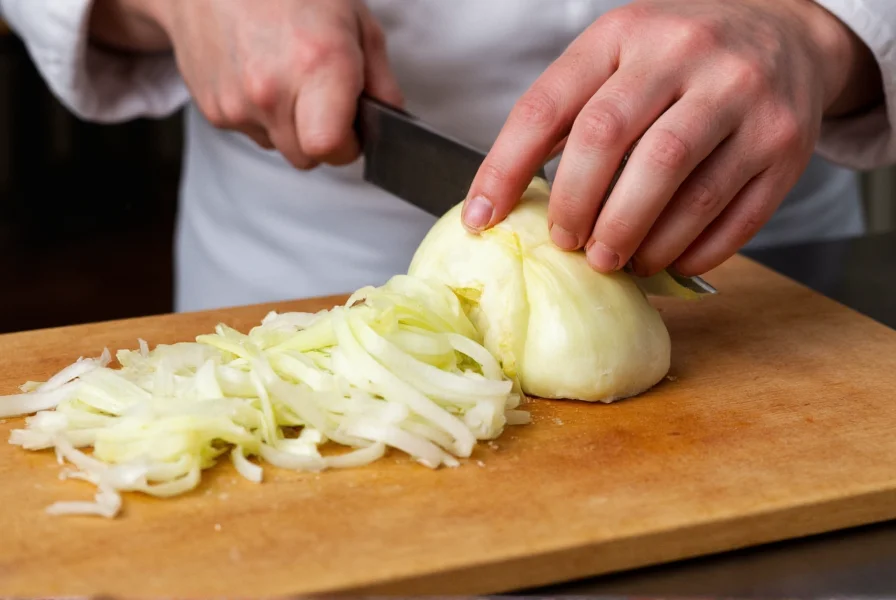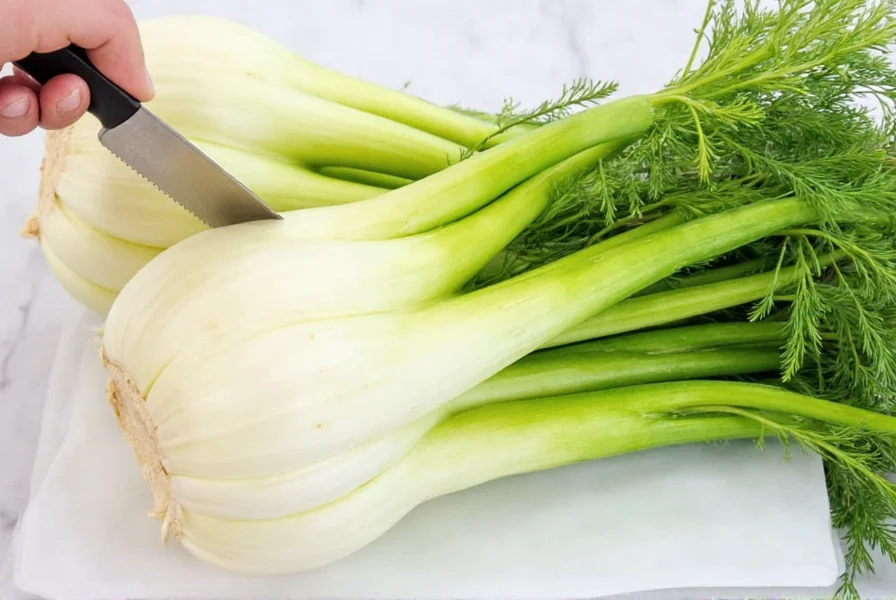Mastering fennel preparation unlocks its delicate anise flavor in countless dishes. Many home cooks struggle with this unique vegetable, often wasting edible parts or creating uneven cuts that compromise recipes. Understanding how to cut fennel properly ensures maximum flavor extraction and perfect texture in your culinary creations.
Essential Tools for Cutting Fennel
You'll need just three basic kitchen tools:
- Sharp chef's knife (8-10 inches)
- Stable cutting board
- Vegetable peeler (optional for tough outer layers)

Step-by-Step Fennel Cutting Guide
1. Preparation: Trimming and Cleaning
Begin by removing the feathery fronds (save these for garnish) and tough stalks. Cut about ½ inch from the root end to create a stable base. Rinse the bulb under cold water, separating layers slightly to remove any hidden dirt. This addresses the common question of how to prepare fennel for cooking without wasting edible portions.
2. Removing Tough Outer Layers
Peel away any discolored or tough outer layers using your fingers or a vegetable peeler. Fresh fennel typically requires minimal peeling—usually just one layer. Don't discard these layers; they're perfect for stock preparation.
3. Cutting Methods for Different Applications
| Cooking Method | Cutting Technique | Why This Works |
|---|---|---|
| Salads | Thin crosswise slices (⅛ inch) | Maximizes surface area for dressing absorption while maintaining crisp texture |
| Roasting | Vertical wedges (1½ inch) with core intact | Core holds shape during cooking; even caramelization |
| Soups/Stews | ¼-inch dice | Uniform size ensures even cooking without disintegration |
4. Handling the Core
The core presents the biggest challenge when learning how to cut fennel bulb. For most applications, keep the core intact during initial cutting for stability. After creating your primary shape (slices, wedges, or dice), you can remove the tough core portion if desired. For raw applications like salads, removing the core yields a more tender bite.
5. Using Fronds and Stalks
Don't discard these valuable parts! The feathery fronds make an excellent garnish or can be minced for fennel pesto. Sturdy stalks work well in stocks or can be sliced thinly for stir-fries. This completes the proper technique for cutting fennel by utilizing the entire vegetable.
Advanced Cutting Techniques
Fennel for Raw Applications
When preparing fennel for salads or crudités, slice extremely thin using a mandoline (with guard) for perfect consistency. Soak slices in ice water for 15 minutes to enhance crispness and mellow the anise flavor slightly—a pro tip often missing from basic how to slice fennel for salad guides.
Fennel for Cooking Applications
For roasting or braising, keep pieces larger than you might expect—fennel shrinks significantly during cooking. Always cut through the core vertically first to maintain structural integrity. This addresses the common problem of fennel falling apart during cooking that frustrates many home chefs.
Storage Tips for Cut Fennel
Proper storage extends freshness of your prepared fennel:
- Store cut fennel in airtight container with slightly damp paper towel
- Place core-side down to minimize moisture loss
- Use within 3-4 days for best flavor and texture
- Freeze diced fennel for soups (blanch first for 2 minutes)
Understanding how to store cut fennel properly prevents waste and maintains quality between meal preparations.
Common Mistakes to Avoid
- Mistake: Cutting horizontally first without stabilizing the core Solution: Always make your first vertical cut through the core
- Mistake: Discarding all outer layers Solution: Only remove visibly damaged layers; inner layers are tender
- Mistake: Using a dull knife Solution: Sharp knives prevent bruising and ensure clean cuts











 浙公网安备
33010002000092号
浙公网安备
33010002000092号 浙B2-20120091-4
浙B2-20120091-4